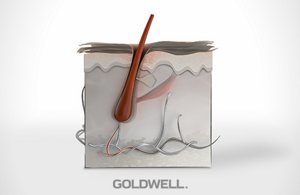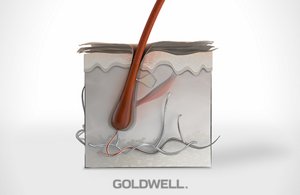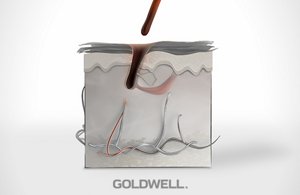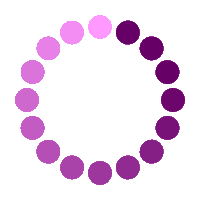- Home
- Education
- Hair Science
- Hair Facts
- The Growth Cycle
HAIR GROWTH CYCLE
The hair root, called the follicle, is located inside the skin and begins to develop before we are even born.
The follicle is where all the elements needed to create what we know as hair come together:
Cell growth
Keratin building
Dehydration
The follicle is fed by small blood vessels allowing the trychocytes to build the matrix cells through cell division thus allowing the hair fiber to push up and out. In essence to grow. While this is happening, melanocytes are also adding color to the matrix cells, creating hair color. The new cells then need to squeeze through the bottleneck shape of the root, making the trychocytes longer and transforming them into the cortex.
The hair remains attached to the follicle, though the outer funnel shape allows the hair to move freely.
HAIR TYPES
Hair is grouped according to follicle size. There are three basic groups:
Lanugo
Vellus
Terminal
LANUGOS
Lanugos hair is the first hair fiber produced by a follicle, before a baby is even born. It begins to develop as uniform, synchronized growth after the 20th week of a pregnancy. Just before birth, the hair becomes either Vellus or Terminal.
VELLUS
Vellus hair is short, fine and contains no pigment. It is the fuzzy hair that covers the face, and is the only follicle without a sebaceous gland.
TERMINAL
Terminal hair comes from the largest follicles. It is long and coarse, pigmented and often contains a medulla. Terminal hair can be found growing from the scalp, the beard, eyebrows, eyelashes and pubic hair. It is very thick and capable of switching back to Vellus hair production before again becoming Terminal.
HAIR CYCLE

PHASE 1
The Anagen phase is when 85 to 90% of hair is in the growing phase. It continues to develop and grow for 6-7 years.

PHASE 2
In the Catagen phase the hair stops growing. There is no more material produced and the contacts between the follicle walls and the fibre shaft cease. This transitional phase lasts for approximately 3-5 Month. At any given time, 1% of hair is in this phase.

PHASE 3
This is the Telogen phase. It lasts a few weeks with 10 – 15% of hair is in this phase after which it falls out.

PHASE 4
In the Exogen phase the follicle still rests and the hair fibre can easily be removed by light mechanical force (brush, comb). It lasts for days. Empowered by hormones the hair follicle starts again with the Anagen phase and resume protein production. If hormones are missing the follicle can remain dormant or even retract into the skin.
The average scalp contains up to 150,000 individual hairs, or approximately 200 hairs per/cm2. Each day, the average person looses between 80 and 100 hairs. This isn’t an issue as long as follicles continue to produce new hair. Each follicle, or root, can produce 10 to 12 hairs in a lifetime. With 150,000 follicles that means approximately 1 million hairs with a total length of 1000 kilometers.
The natural cycle of a hair’s life is approximately 6 to 7 years. However, we can stimulate it with various massage techniques along with special ingredients.
HAIR LOSS
People with hair loss loose significantly more than 100 hairs per day. Hair loss is classified as reversible (temporary) and irreversible (permanent) loss.
One of the biological reasons for hair loss is a premature transition from the growing phase to the phase of rest. Another one is the decrease of the hair follicle usually caused hormonally (for men). External factors like insufficient nutrition, stress, medicine or mechanical influences (low quality combs and brushes) can also play an important role.
Reversible hair loss caused by external factors can be suppressed quickly by an adequate treatment. In case of biological reasons the status of the follicle may tell whether the hair loss is reversible or not. Clients with extreme forms of hair loss should contact their doctor.
BY THE WAY
If you’ve ever experience hair re-growth where the hair seemed to be growing in the chemical color you applied several weeks ago, that hair is in either the Catogen or the Telogen phase.
Learn more about Hair Facts here.
- Home
- Education
- Hair Science
- Hair Facts
- The Growth Cycle


